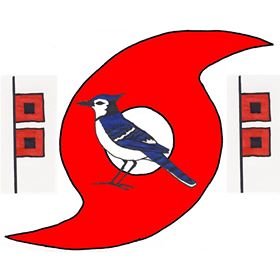The risk posed by a Tropical Low caused the Australia Bureau of Meteorology to issue a Warning for a portion of the coast of Western Australia on Saturday. At 5:00 p.m. EDT on Saturday the center of the Tropical Low was located at latitude 12.2°S and longitude 125.8°E which put the center about 260 miles (420 km) north-northeast of Kuri Bay, Australia. The Tropical Low was moving toward the southwest at 4 m.p.h. (6 km/h). The maximum sustained wind speed was 40 m.p.h. (65 km/h) and there were wind gusts to 50 m.p.h. (80 km/h). The minimum surface pressure was 1003 mb.
A Warning is in effect for the portion of the coast of Western Australia from Kalumburu to Kuri Bay.
A Watch is in effect for the portion of the coast of Western Australia from Kuri Bay to Cockatoo Island.
The U.S. Joint Typhoon Warning Center designated the Tropical Low as Tropical Cyclone 29S.
The Tropical Low was strengthening gradually as it moved near the northern coast of Western Australia. Vertical wind shear was still causing the distribution of thunderstorms to be asymmetrical. The Tropical Low was under the northern part of an upper level ridge that extended from Australia to the South Indian Ocean. The upper level ridge was producing northeasterly winds that were causing the vertical wind shear. Most of the thunderstorms were occurring in bands in the southern half of the Tropical Low. Bands in the northern side of the Tropical Low consisted primarily of showers and lower clouds. Storms near the center of circulation generated upper level divergence that pumped mass away to the south and west of the Tropical Low. The removal of mass in the upper levels was nearly equal to the inflow of mass in the lower levels of the atmosphere. The balance of inflow and outflow was causing the surface pressure to remain constant.
The asymmetric distribution of thunderstorms was also causing the pattern of wind speeds to be asymmetrical. Winds to tropical storm force extended out 115 miles (185 km) in the southern side of the Tropical Low. The winds in the northern part of the Tropical Low were blowing at less than tropical storm force.
The Tropical Low will move through an environment somewhat favorable for intensification during the next 24 hours. The Tropical Low will move over water where where the Sea Surface Temperatures are near 30°C. The northern part of an upper level ridge over Australia and the South Indian Ocean will continue to produce northeasterly winds that will blow toward the top of the Tropical Low. Those winds will cause some vertical wind shear. The wind shear will inhibit intensification, but the Tropical Low is likely to intensify gradually during the next 24 hours.
The Tropical Low will move around the northwestern part of a high pressure system over Australia. The high pressure system will steer the Tropical Low toward the southwest during the next 24 hours. On its anticipated track, the Tropical Low will move parallel to the coast of Western Australia.
The Tropical Low could bring gusty winds and locally heavy rain to the coast of Western Australia between Kalumburu and Kuri Bay. Heavy rain could cause flash floods in some locations.
